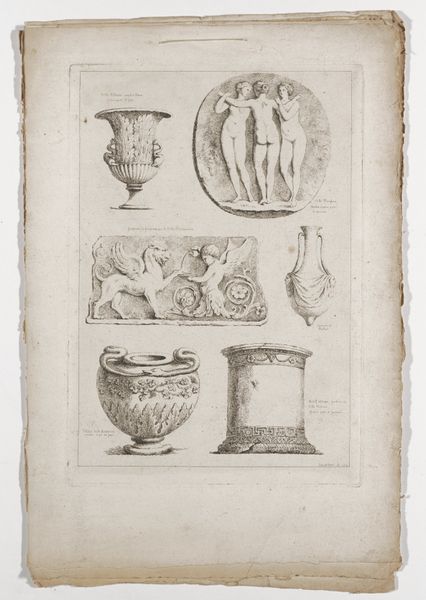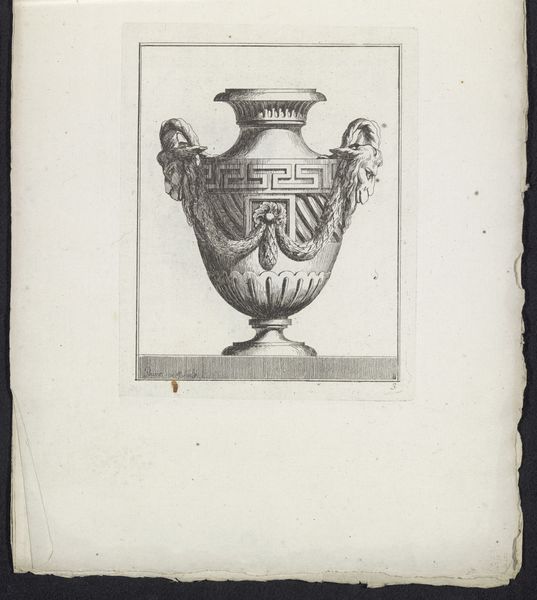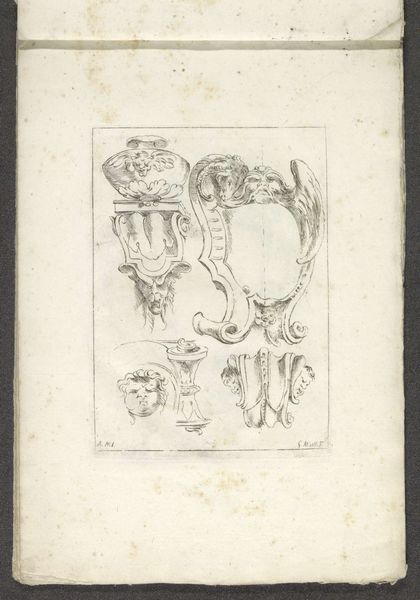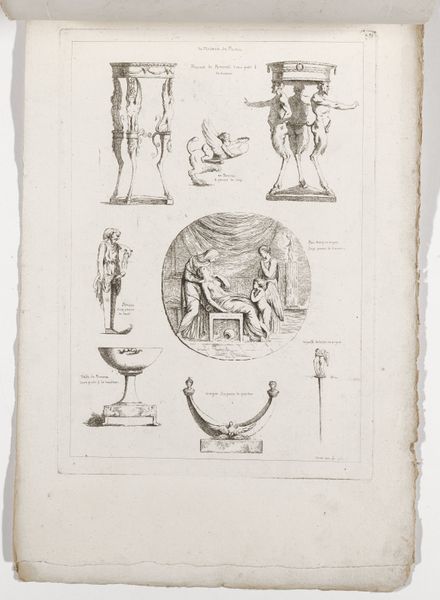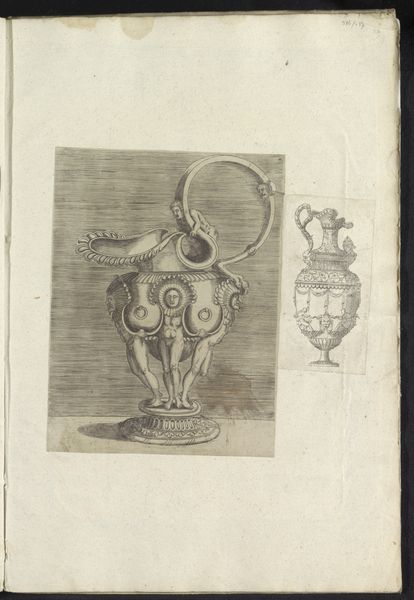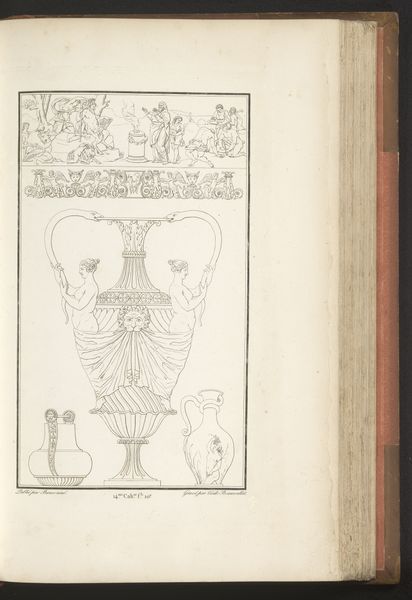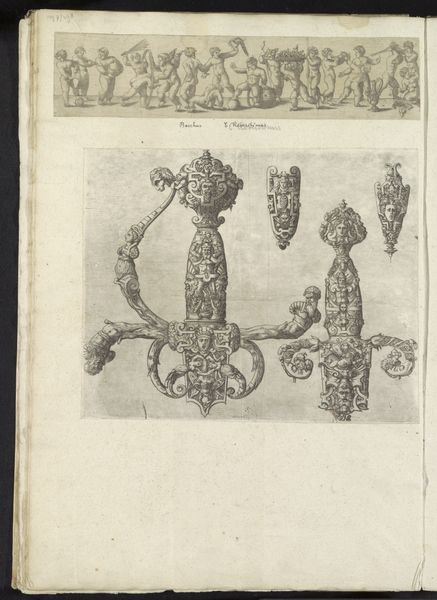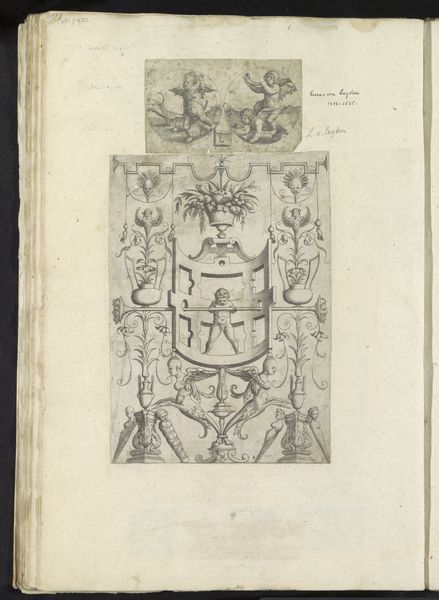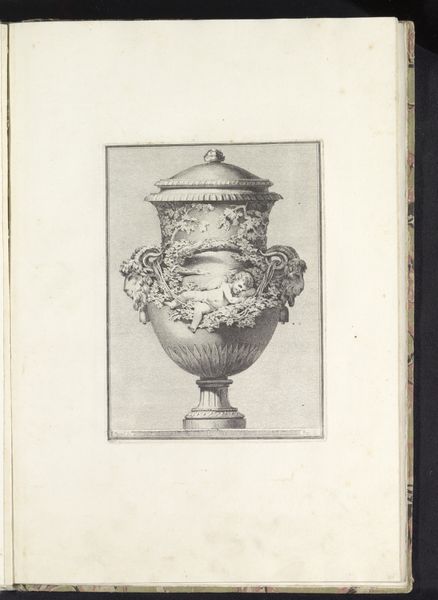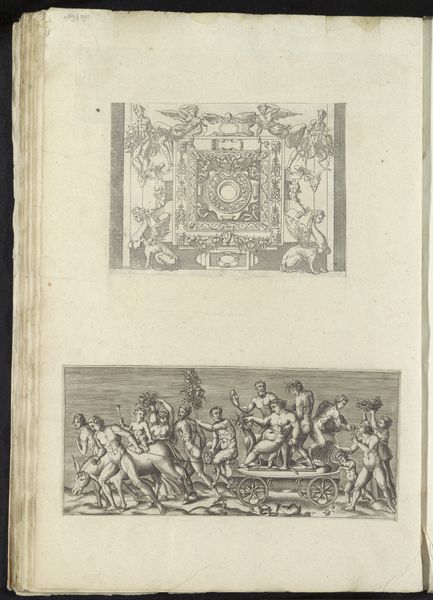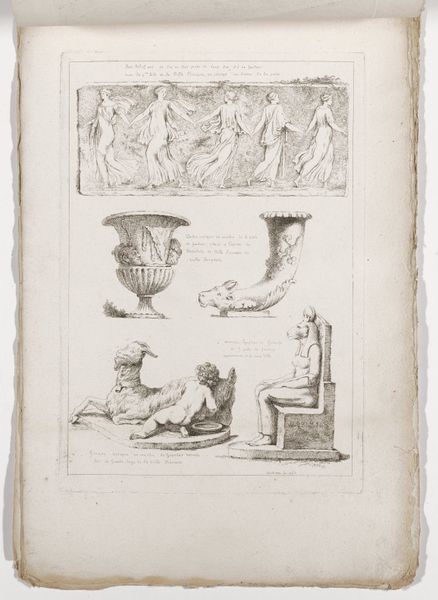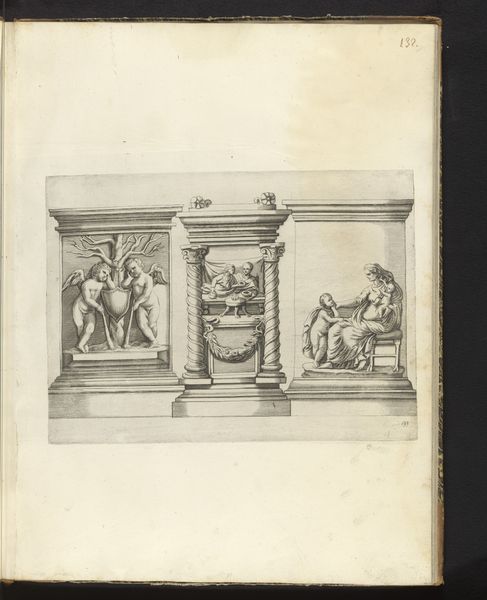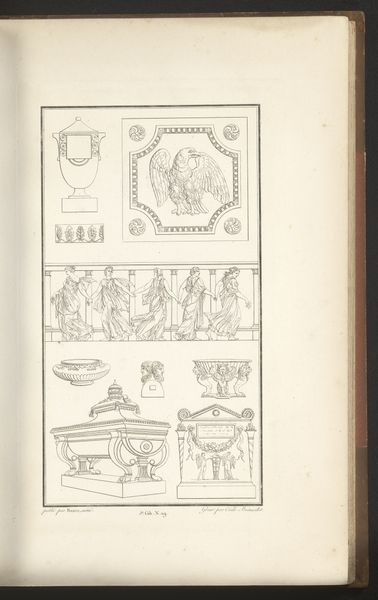
Albumblad met drie prenten met een urn, een kan en een fries met saters en bacchanten 16th century
0:00
0:00
georgesreverdy
Rijksmuseum
drawing, ink
#
drawing
#
classical-realism
#
figuration
#
11_renaissance
#
ink
#
history-painting
Dimensions: height 430 mm, width 292 mm
Copyright: Rijks Museum: Open Domain
This is a page of prints made by Georges Reverdy in the mid-16th century. Reverdy worked in Lyon, a city in which printmaking was booming at the time. Here, he used etching: a printmaking technique which involves using acid to cut into a metal plate, which is then inked and used to make impressions on paper. The crisp precision that etching enables perfectly suits Reverdy’s imagery. He's representing ancient artifacts, such as urns and friezes, meticulously rendered with close attention to detail. It seems that he's inviting us to share his enthusiasm for classical forms, but these images were also models for other makers. As printmaking developed, it became a crucial medium for disseminating design ideas. Artisans throughout Europe could see the latest fashions at a distance. So, consider this page not just as a work of art in its own right, but as a crucial node in a network of circulating images and influences. It shows how early modern craft and design relied on a burgeoning print industry.
Comments
No comments
Be the first to comment and join the conversation on the ultimate creative platform.
